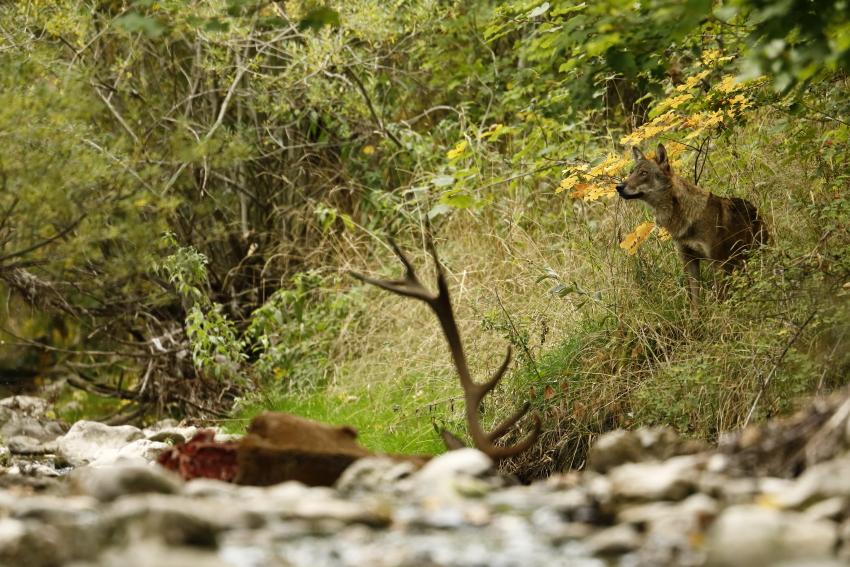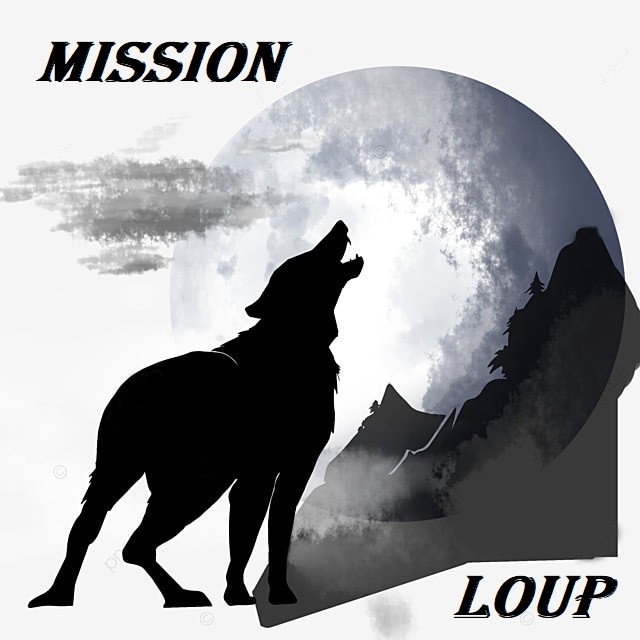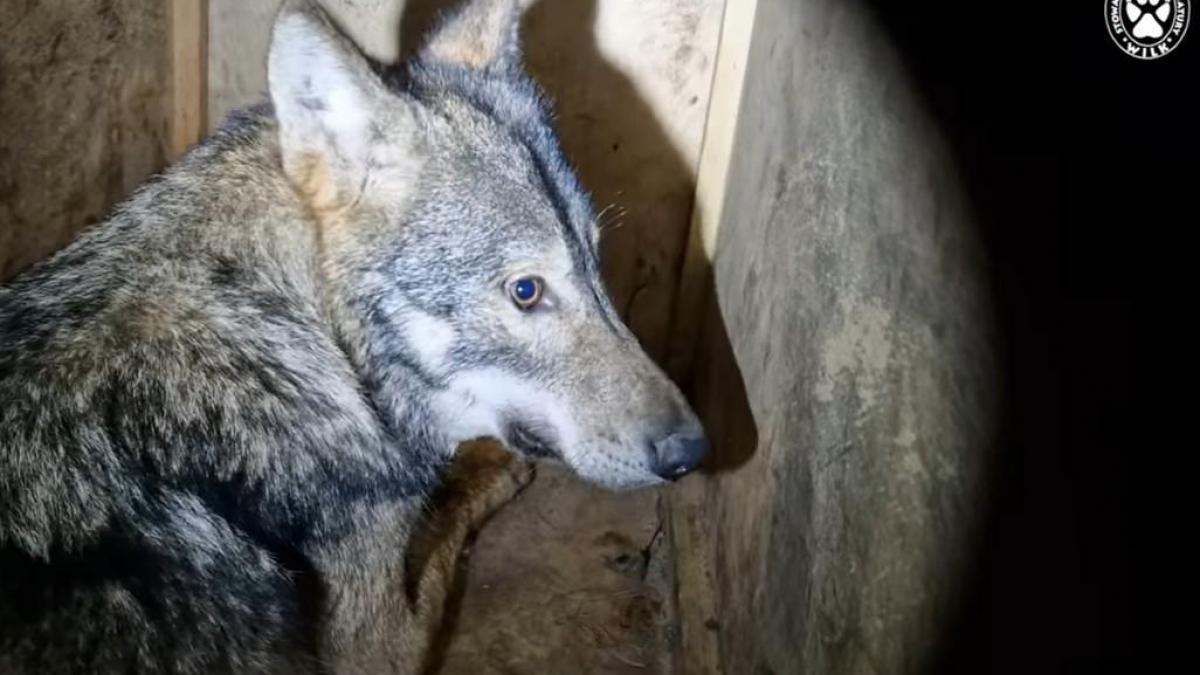The purpose of our study isn't only to gain a better understanding of the functioning of the wolf and the pack we're monitoring, but also to look at the inter-species (1) relationships between the predator and its prey. Actually, those relationships are extremely interesting and also provide invaluable information. They aren't easy to observe, as you need to be in the right place at the right time (being close of the action or using binoculars/long-sight or thermal vision). But you also need more time to get information than the few seconds it takes for a wolf to pass by in real life.
That night, we chose a pasture frequented by prey species, particularly deer. We knew that the pack was nearby, thanks to the monitoring data. Switching on our thermal vision, we discovered between 25 and 30 deers, most of them were females and fawns, including 2-3 males. They were quitely grazing. The observation was therefore based on the deer's behavior, their activities and their state of alertness as they approached the important mating season. Nothing to report in terms of sound, it was a bit early to hear any deer bellowing. Only 2 young males were playing, fighting without any real stake. Hormones were still at rest, and the deer were quiet, except for an occasional call from a fawn looking for its mother.
We went on observing, alternating from time to time with an overview of the whole area. We counted at least 32 cervids in the area we were focusing on. This is quite a large number, as doe herds are usually more fragmented, but we weren't really surprised.
We targeted a male in thermal vision, standing in the middle of the area; we couldn't see his antlers from the distance (30-40m), but we could guess that he was quite impressive. All of sudden, on the right, we saw a movement of panic, THE movement of panic. Like a domino effect, the deer all started running wildly and head...straight for us ! An indescribable moment, at least 25 deer running, impressive. Then, we discovered the reason why the deer were running like hell : a she-wolf, all alone, quietly arrived on the pasture. She trotted along, stopped and began to roll frantically on the ground, all four paws in the air. Once up, she shaked herself energetically and continued walking, passing behind a hill, out of our sight. This wolf, probably a sub-adult according to the monitoring cameras we checked the next day, didn't launch an attack, she simply arrived and caused a veritable tidal wave among her prey. We were delighted by this impressive scene, but we realized that all the deer were coming straight at us, without us being able to see or spot them, as we were following the wolf with our thermal vision. We could feel them getting extremely close and, once the she-wolf has disappeared, we pointed the thermal vision to our right. A dozen does passed within 10 meters of us, running. And on our left, a male came along at less than 10 meters away, stopped and stared at us, before continuing on its way.
We saw the she-wolf reappear some thirty meters further down, but she slipped into the forest and disappeared, out of sight. The deer moved on to a pasture above our position, except for a small group who, when the wolf appeared on the pasture, was in an elevated area. They decided not to move, in view of the predator's direction, so as not to draw attention to themselves. In fact, as several of their congeners were already in the wolf's path, this guaranteed them a certain tranquillity. The wolf was therefore spoilt for choice with other deer, much closer and in his path.
It's extremely interesting to be able to witness interactions between wolves and their prey. This gives us a better understanding of the predator's behavior, but also of the "techniques" put in place by the prey. In such circumstances, some individuals will remain in "status quo", being away from the predator and not in its line of sight. And others who, finding themselves in the predator's line of sight at a closer range, will choose to flee for their lives. We can assume that, as in human beings in such circumstances, each individual hopes not to be the one targeted by the predator. The group effect gives, in this sense, a greater chance of survival.
As we know now, prey learn about predators through experience and observation. This knowledge is passed on to subsequent generations, whether genetically or epigenetically (2). They are therefore able to identify, through the wolf's behavior and the situation, the moments when the risk of attack is high and those when they can temper it, while maintaining a high state of vigilance. They are often more reactive in two given circumstances: if the "safe" distance (3) from the predator is less than normal (surprise, predation attempt) or when they know wolf is on the hunt (dawn and night mainly).
The she-wolf has been a spoilsport that evening, but no deer were targeted. Judging by the time she appeared, she had certainly just started her "nocturnal tour", probably feeling out of luck in such a situation or having possibly, off-camera, missed a possible target as soon as she got to the place.
Dictionary
(1) Inter-species: everything that happens between two different species (in this case, between wolves and deer, predators and their prey).
(2) Epigenetics: everything that is learned through upbringing, apprenticeships and experiences, from birth to death.
(3) Safety distance: the distance accepted by an animal between itself and a possible danger. Breaking this distance will provoke an instinctive reaction.
Article : TT - Wolf Mission
Photo : Fabien Bruggmann


